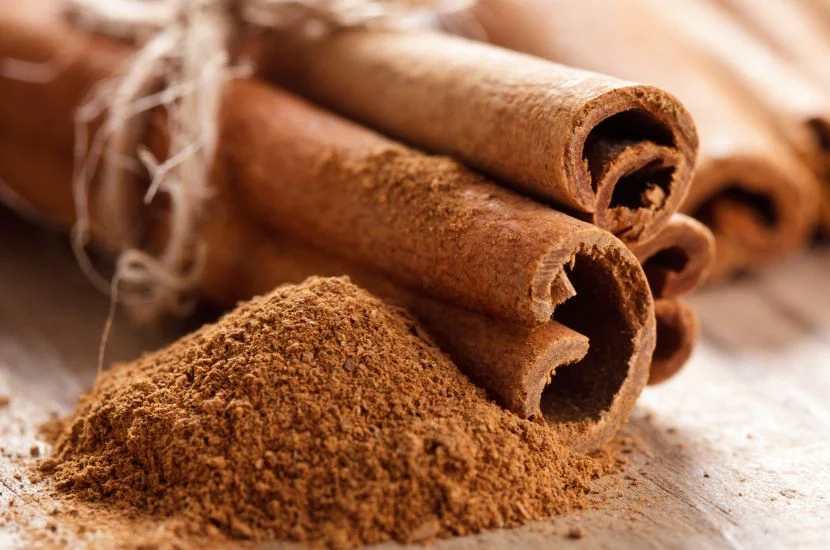In the realm of spices, cinnamon stands out not only for its delightful flavor but also for its potent medicinal properties. For centuries, this aromatic spice has been revered in traditional medicine for its numerous health benefits. Among its many virtues, one of the most remarkable is its ability to help regulate blood sugar levels. Let’s delve into the science behind this ancient remedy and explore how cinnamon can be a powerful ally in managing diabetes and promoting overall health.
The Chemistry of Cinnamon:
Cinnamon is derived from the inner bark of several tree species belonging to the genus Cinnamomum. This spice owes its distinct flavor and aroma to its rich composition of compounds, including cinnamaldehyde, cinnamic acid, and cinnamate derivatives. However, it is a particular type of polyphenol known as methylhydroxychalcone polymer (MHCP) that has captured the attention of researchers studying its effects on blood sugar levels.
Balancing Blood Sugar:
Numerous studies have demonstrated cinnamon’s ability to enhance insulin sensitivity and improve glucose metabolism, thereby aiding in the regulation of blood sugar levels. Insulin is a hormone produced by the pancreas that helps regulate glucose uptake by cells, allowing them to use glucose for energy. Individuals with insulin resistance or impaired insulin function often experience elevated blood sugar levels, a hallmark of diabetes.
Clinical Evidence:
Clinical trials investigating the effects of cinnamon on blood sugar control have yielded promising results. A meta-analysis published in the Journal of Medicinal Food examined 10 randomized controlled trials involving over 500 participants with type 2 diabetes. The analysis concluded that cinnamon supplementation significantly reduced fasting blood glucose levels and hemoglobin A1c, a marker of long-term blood sugar control.
Mechanisms of Action:
The mechanisms through which cinnamon exerts its blood sugar-lowering effects are multifaceted. Cinnamaldehyde, the primary compound responsible for cinnamon’s flavor and aroma, has been shown to mimic insulin and enhance insulin signaling pathways in cells. Additionally, MHCP appears to potentiate insulin action by activating insulin receptors and inhibiting enzymes that deactivate insulin.
Dosage and Formulation:
When incorporating cinnamon into a diabetes management regimen, the type and dosage are crucial considerations. While both Cassia cinnamon (Cinnamomum cassia) and Ceylon cinnamon (Cinnamomum verum) have demonstrated blood sugar-lowering effects, Cassia cinnamon contains higher levels of coumarin, which may be toxic in large doses. Therefore, Ceylon cinnamon is often preferred, especially for long-term use.
Practical Applications:
Integrating cinnamon into one’s diet can be as simple as sprinkling it on oatmeal, yogurt, or fruit, or incorporating it into savory dishes like stews and curries. Alternatively, cinnamon supplements are available in capsule or extract form for those seeking a more standardized dosage.
Precautions and Considerations:
While cinnamon is generally safe for most individuals when consumed in culinary amounts, those taking medications for diabetes should exercise caution, as cinnamon supplementation may potentiate the effects of these drugs, leading to hypoglycemia (low blood sugar). Additionally, individuals with liver disease or those who are pregnant should consult with a healthcare professional before incorporating cinnamon supplements into their routine.
In Conclusion:
Cinnamon’s ability to aid in blood sugar control offers a natural and complementary approach to managing diabetes and promoting overall health. By harnessing the power of this ancient spice, individuals can take proactive steps toward better glycemic control and reduce their risk of diabetes-related complications. However, like any supplement or medicinal intervention, it is essential to approach cinnamon use with knowledge, moderation, and guidance from healthcare professionals to maximize its benefits safely.
RESOURCES
- Allen, R. W., Schwartzman, E., Baker, W. L., Coleman, C. I., & Phung, O. J. (2011). Cinnamon Improves Glucose and Lipids of People with Type 2 Diabetes. Journal of Medicinal Food, 14(9), 884-889. DOI: 10.1089/jmf.2010.0180
- Akilen, R., Tsiami, A., Devendra, D., & Robinson, N. (2012). Cinnamon Use in Type 2 Diabetes: An Updated Systematic Review and Meta-Analysis. The Journal of the American Board of Family Medicine, 25(1), 16-23. DOI: 10.3122/jabfm.2012.01.110203
- Koppikar, S. J., Choudhari, A. S., Suryavanshi, S. A., Kumari, S., Chattopadhyay, S., & Kaul-Ghanekar, R. (2020). Cinnamon: A Multifaceted Medicinal Plant. Journal of Evidence-Based Complementary & Alternative Medicine, 25, 67-82. DOI: 10.1177/2156587219852166
- Qin, B., Panickar, K. S., & Anderson, R. A. (2010). Cinnamon: Potential Role in the Prevention of Insulin Resistance, Metabolic Syndrome, and Type 2 Diabetes. Journal of Diabetes Science and Technology, 4(3), 685-693. DOI: 10.1177/193229681000400324

